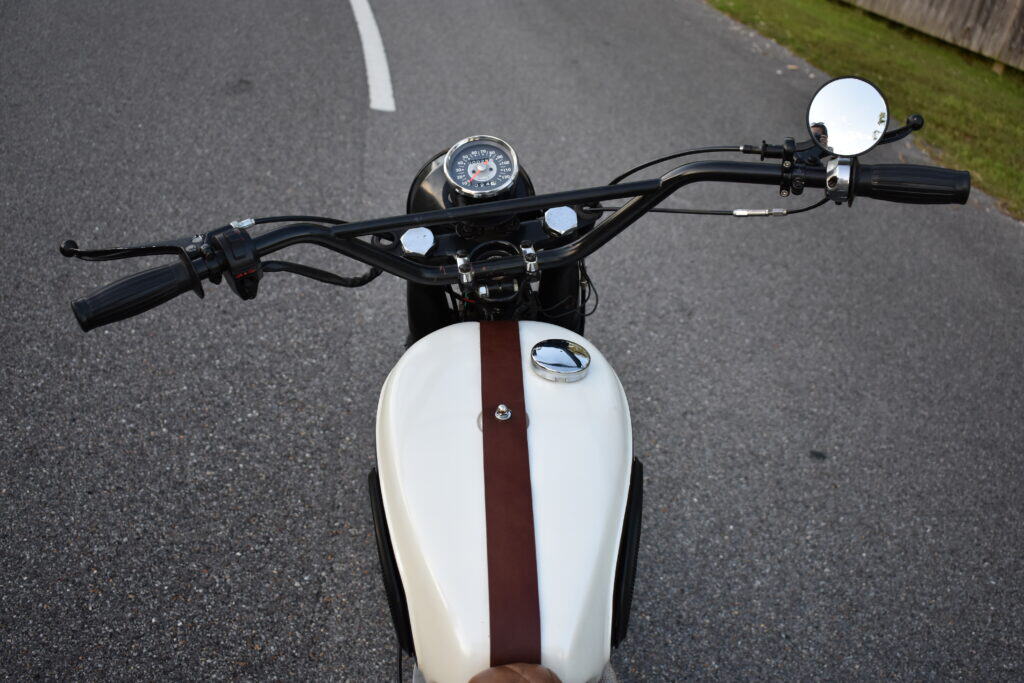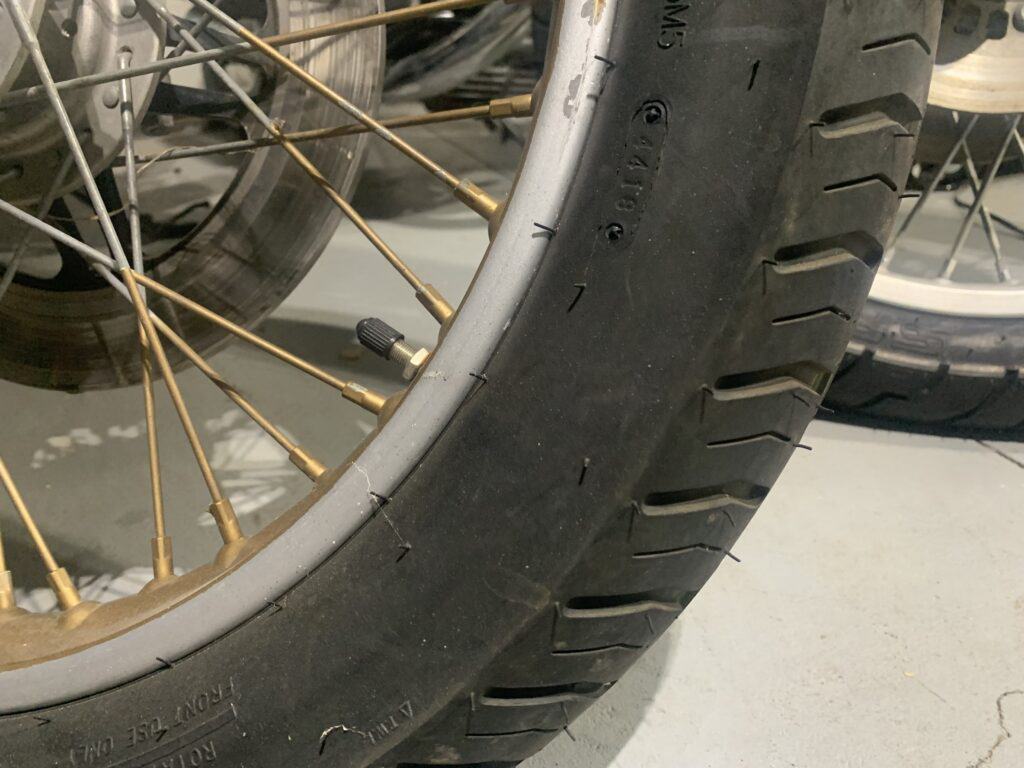
Owning a motorcycle comes with a lot of joys that owning a car doesn’t provide. But there are a few more dangers and precautions a motorcycle rider should be aware of while out for a ride.
One of those dangers is the possibility of fishtailing. All vehicles are capable of fishtailing, but it’s especially dangerous on a motorcycle because of the lack of protection.
What causes a motorcycle to fishtail? Fishtailing on a motorcycle is caused by the back tire losing traction from either snow, ice, water, or loose ground (such as gravel). Most motorcycles are rear wheel drive, so the constant torque can make the back tire more susceptible to slipping. Bald tires or tires with the wrong PSI also contribute to fishtailing.
Fishtailing while on a motorcycle can be extremely dangerous and also very scary. As a motorcyclist, it’s important to know the reasons why a motorcycle fishtails, how to handle them, and how to avoid them in the first place to keep you safe on the road.
Why A Motorcycle Fishtails
When a vehicle fishtails, that means the back tire(s) starts to sway from side to side giving the driver less control of the vehicle. Hence the name; the maneuvering of it is similar to that of a fish’s tail swaying back and forth while it is swimming.
In a perfect world, all roads would be free of any debris or dangerous water and us motorcyclists wouldn’t have to worry about running into such conditions. But you never know what you’ll come up to while on the road and that’s why it’s so important to be aware while riding your motorcycle.
Most motorcycles are rear wheel drive. This means that when the engine is on and in gear, the power the engine is generating is given to the chain which rotates the back tire. That is what essentially powers the motorcycle and the front tire is merely for steering purposes and doesn’t not assist with powering the motorcycle.
Debris or water elements mixed with the constant torque the back tire is receiving can sometimes result in fishtailing. Occasionally, a motorcyclist will twist the throttle and give the motorcycle more power at the wrong moment, meaning the motorcycle could be riding over a sheet of ice or a very sandy section of road. The back tire may lose traction to the road which will often result in the swaying back and forth of the motorcycle.
Fishtailing may also be caused when a motorcyclist has to brake abruptly in slippery situations. The power of the back tire may still have some torque which will cause it to want to continue to go forward while the front wheel is trying to stop.
Sometimes fishtailing on a motorcycle is done on purpose as a rider may be attempting to “peel out.” The rider may amp up some power on the motorcycle then suddenly take off and all that power given to the back wheel will want to go forward faster than the front wheel is letting them.
Lastly, fishtailing can be caused by poor tire conditions. This could mean the tread on the tires is too worn down or the tires have the wrong PSI.
Fishtailing on a motorcycle doesn’t mean the rider is a bad driver. An experienced motorcyclist will have likely experienced this at some point during their riding career. So instead of thinking it’ll never happen to you, think ahead about how you’re going to handle it when it does happen.
How To React To Fishtailing On A Motorcycle
Whether you’re riding in grass, on gravel or sand, or have found yourself riding in wet conditions and start fish tailing, the very first thing you’ll need to do is let off the throttle and stop giving any power to the engine. A lot of people will try to say that giving it a little power will help, but in my experience more power means less control during a fishtail.
The power itself is what is causing the fishtail in the first place. So it makes sense to cut off any power to the back wheel that would cause it to move from side to side. Once you let off the throttle, let the motorcycle coast if possible.
Do not apply the brakes if your situation allows it. It will be an automatic reaction to use your brakes because you’ll want to stop the vehicle from moving at all, but that could essentially make your situation worse. Again, the back tire has power that it’s trying to get rid of, so braking would only make your fishtail worse and make that back tire sway even more.
When your motorcycle begins to fishtail, steer into it. This means that when the back tire is swaying towards the right, you steer towards the right and when the back tire sways towards the left, you steer towards the left (but don’t try to over correct!). This will help reset the back tire to where it needs to be.
If you are in a situation where you need to quickly use your brakes (which may be why your motorcycle starts fishtailing in the first place), use your brakes to your discretion, but remember to cease all power and try to steer towards the sway of your fishtail.
Let’s recap (because this is important!). If you find yourself fishtailing on your motorcycle, first left off the throttle to stop any power given to the back wheel, coast without using your brakes, and steer into the sway of your motorcycle. Once you feel like you are regaining control of your motorcycle, you may then slowly apply your brakes.
How To Avoid Fishtailing On Your Motorcycle

If you’ve ever fishtailed on a motorcycle, you’ll know how unpleasant and scary of an experience it can be. There are a few things you can do to reduce your chances of fishtailing and hopefully avoid it altogether.
Be aware of the weather before going out for a ride. If you know if it’s going to rain or snow or if you know the temperatures are below freezing, perhaps you should think about saving your ride for another day. Avoiding wet conditions will greatly reduce your chances of fishtailing. For more information about knowing when it’s too cold to ride, see my other article here.
This is an obvious one, but always maintain a good speed and resist going over the speed limit. There’s a reason speed limits are posted and it’s not to make you feel restricted. Fishtailing usually happens during high speeds, so there’s no point in risking it by going over the speed limit.
If you find yourself in inclement weather, keep yourself a safe distance between other vehicles on the road. This will prevent you needing to slam on your brakes which could cause fishtailing. Also, give yourself plenty of space in the case you randomly find yourself fishtailing and need room to coast so you don’t have to slam on your brakes.
Lastly, routinely check the status of your tires. Make sure they have the appropriate tire pressure because the wrong PSI can greatly impact your traction on the road. If you notice that the tires are becoming bald, get new ones as soon as you can.
Conclusion
Understanding the causes of a motorcycle fishtail is crucial for every rider, whether you’re a seasoned veteran or just starting out. Knowing that fishtailing is caused by wet or unstable ground conditions mixed with poor tire tread and/or wrong PSI will greatly help any rider be prepared and avoid such conditions.
If you find yourself fishtailing on your motorcycle, let off the throttle and let your bike coast without braking if possible. Gently steer into the skid to correct itself.
What have you guys done to correct your fishtailing situations? What conditions were you in that made it happen in the first place?
